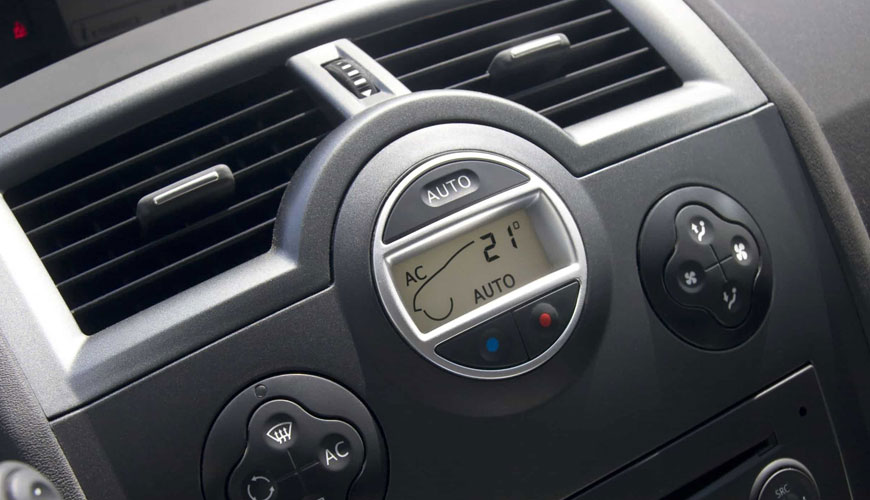

In the "Analysis of aldehydes and ketones emitted from the Renault D49 3085 air conditioning system" standard developed by the French Renault automobile company, it is stated that for the formaldehyde, aldehydes and ketones emitted from the part inside the climate chamber, these compounds are dissolved in water after heating and then this solution is analyzed by high performance liquid chromatography (HPLC). A test method for analysis is described.

Formaldehyde is a colorless, flammable gas at room temperature and has a strong odor. Long-term exposure to formaldehyde causes adverse health effects. Formaldehyde is commonly found in resins used in the manufacture of composite wood products such as plywood, chipboard, and medium-density fibreboard, building and insulation materials, household products such as glues, paints and coatings, lacquers and paper products, some pharmaceuticals, cosmetics, and consumer products such as dishwashing detergents and fabric softeners. It is found in the preservatives and fertilizers and pesticides used. On the other hand, there is formaldehyde in emissions from fuel-burning vehicles.
The difference between aldehydes and ketones is the placement of the carbonyl group within the molecule. An aldehyde is an organic compound in which the carbonyl group is attached to a carbon atom at the end of the carbon chain. Ketone is an organic compound in which the carbonyl group is attached to a carbon atom in the carbon chain. Aldehydes and ketones generally have lower boiling points than alcohols.
Aldehydes and ketones can only be identified by oxidation reactions and addition of double bonds. The two test methods used to identify aldehydes and ketones are: 2,4-dinitrophenylhydrazine test and sodium bisulfate test. In the 2,4-dinitrophenylhydrazine test, aldehydes and ketones react with the 2,4-dinitrophenylhydrazine reagent to give a yellow-orange precipitate. In the sodium bisulfate test, aldehydes and ketones react with sodium bisulfate to form an aldehyde bisulfite or ketone bisulfite. The products are well crystallized and perfectly soluble in water.
The Renault D49 3085 test method allows the verification of large parts under analysis conditions closer to actual use, with control of not only heating time and temperature, but also humidity and air.
Among the numerous testing, measurement, analysis and evaluation studies it provides for businesses in various sectors, our organization also provides analysis services of aldehydes and ketones emitted from the air conditioning system, within the scope of the Renault D49 3085 standard, with its trained and expert staff and advanced technological equipment.
To get an appointment, to get more detailed information or to request an evaluation, you can ask us to fill in our form and reach you.